Driving While Standing Still
Andrew Bush combines performance with portraiture and a disconcerting measure of intimacy in a series where he took portraits of other drivers—often at 70 miles per hour—with a medium-format camera attached to the passenger side of his car.

Interview by Rosecrans Baldwin
There’s a fantastic lack of motion in the pictures, even at 70 miles an hour. The subjects could be seen as parked. When you began the project, what were you hoping to shoot?
Driving is as much about going out into the world and going from point A to B and getting the thing you want as it is about circulating one’s image and being seen. Even though our car shelters us like a room, it seems it is the speed we choose to drive and the direction we chose to go that really determine the space we own and the privacy we associate with driving. I was interested in moving at the same speed as the driver beside me as a way to look into their world, to show them motionless. Continue reading ↓
An exhibition will open on Thursday, April 23 and close on Saturday, June 27 at Yossi Milo Gallery, New York. The exhibition is presented in conjunction with Julie Saul Gallery, New York, where additional large-scale work from the “Vector Portraits” series will be on view. All images used with permission, © copyright the artist, all rights reserved.
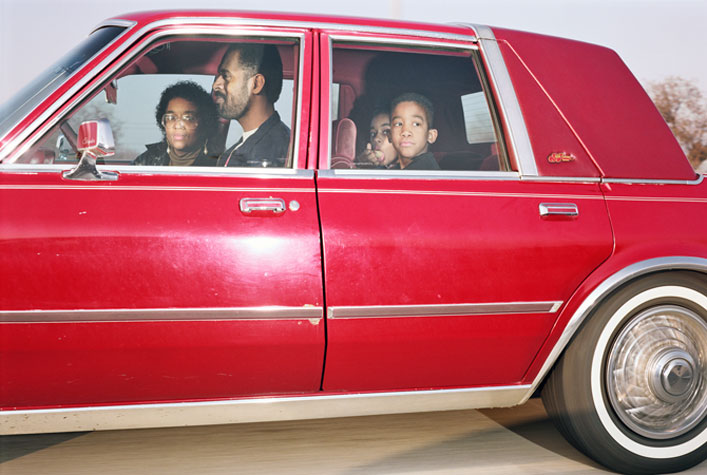
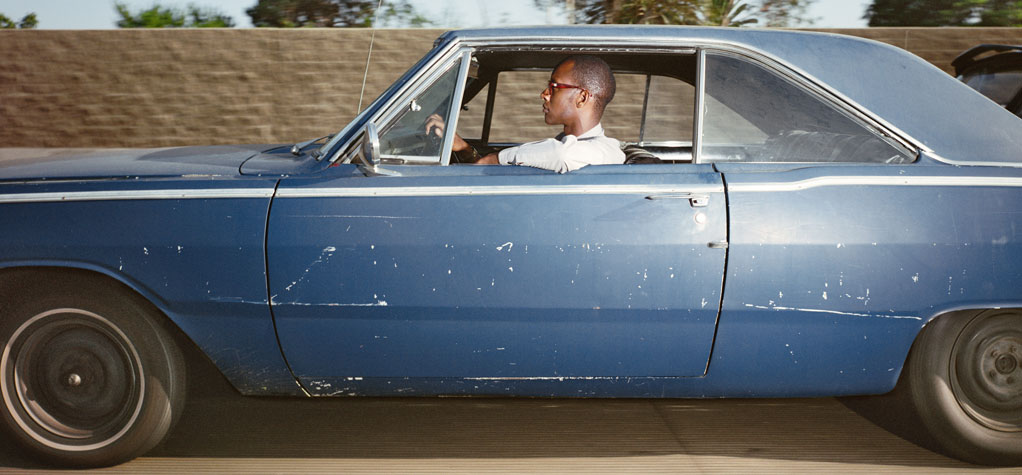
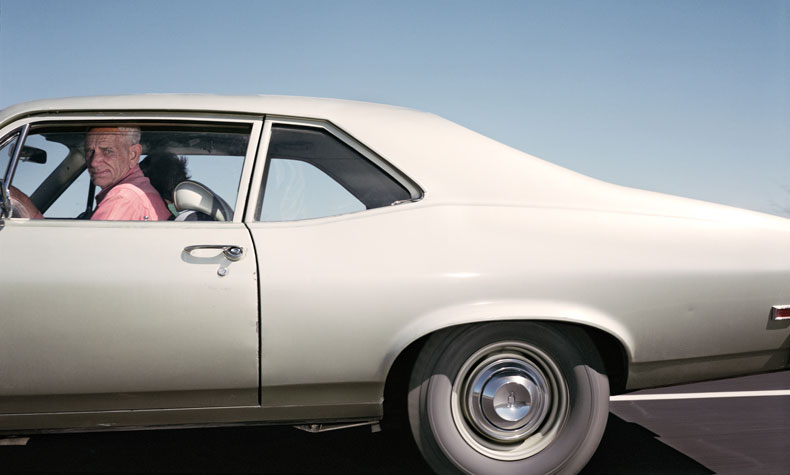
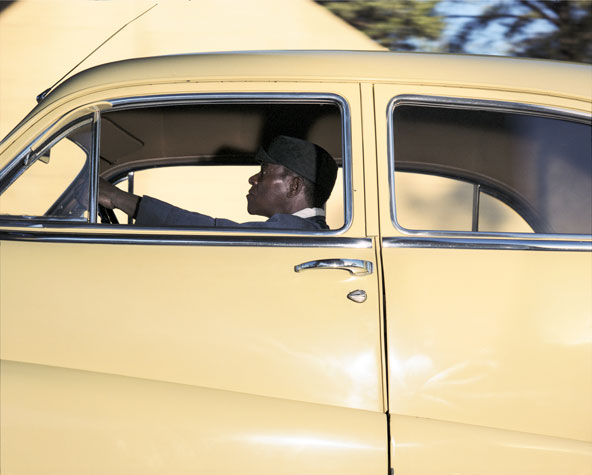
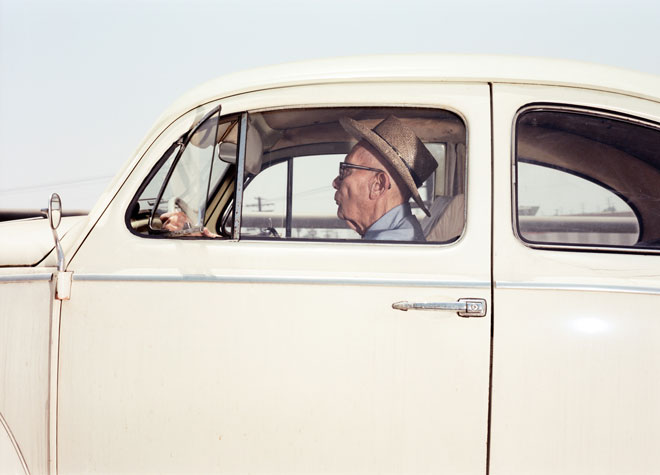
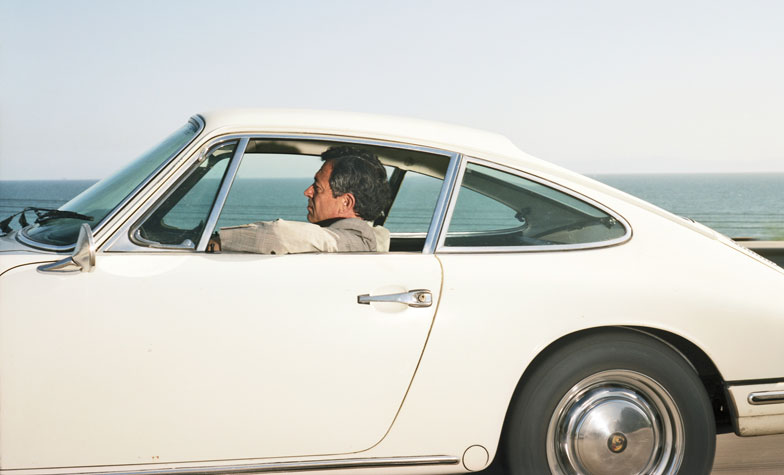
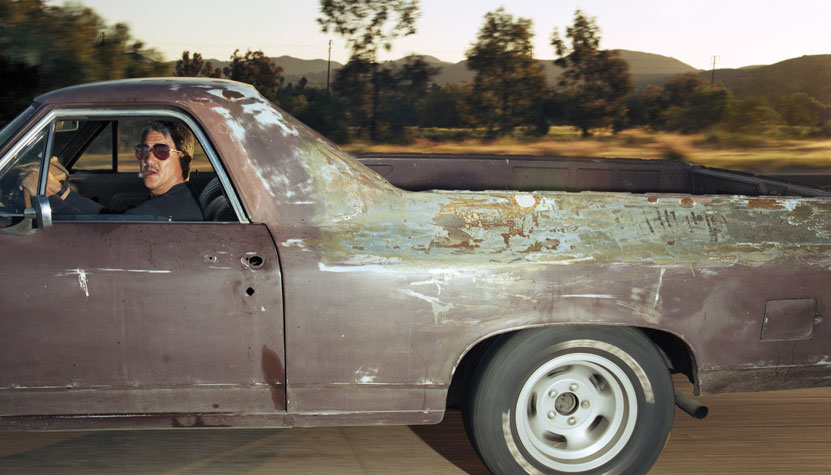
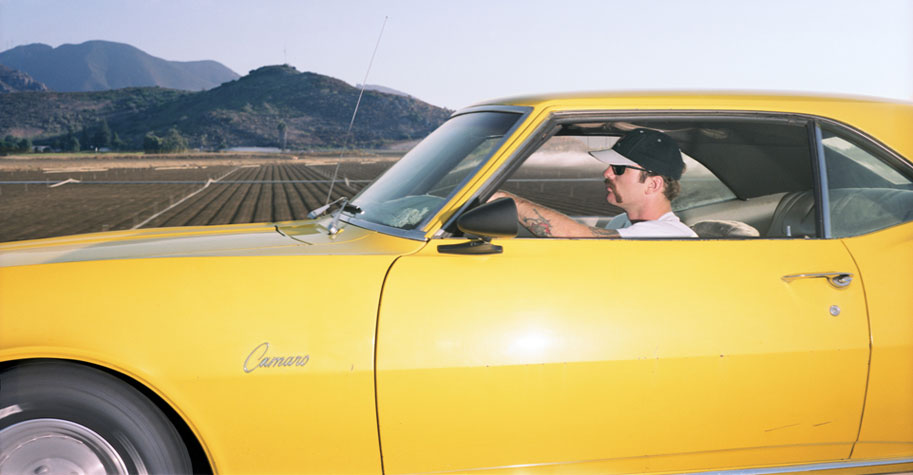
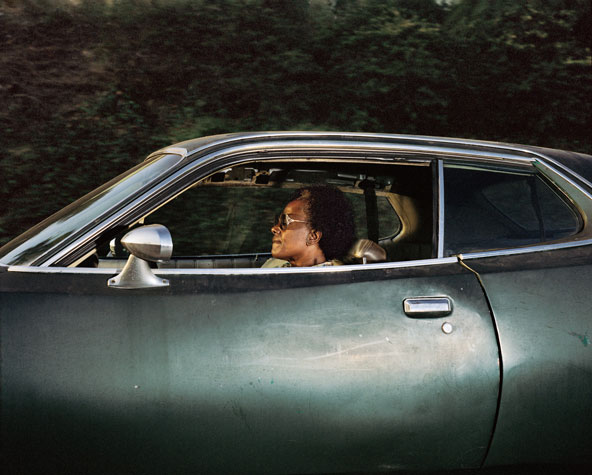
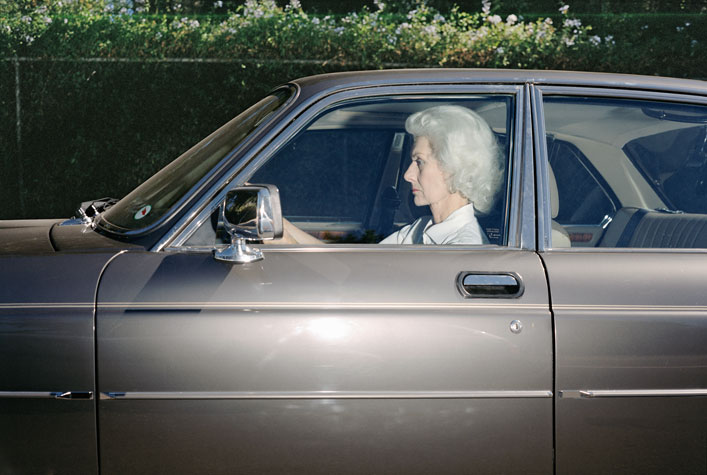
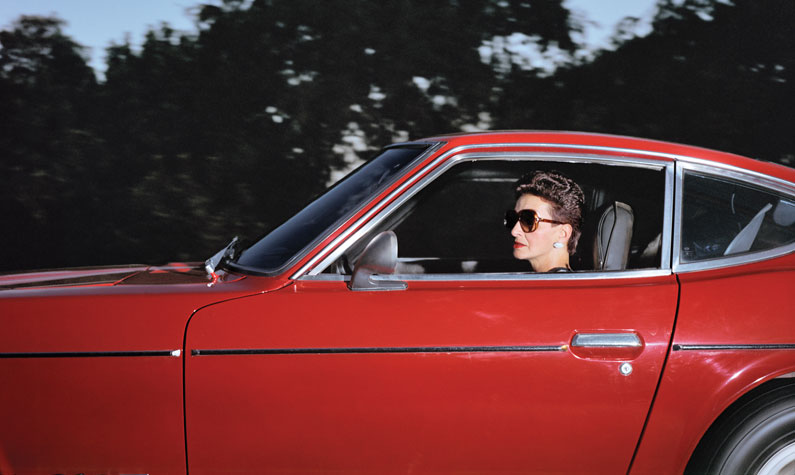

Interview continued
Los Angeles is a uniquely car-based ecosystem. Are we freed by our cars, or are we slaves to them?
In cities like Los Angeles the urban environment is constructed around the car—we are in close proximity but mute to one another. Driving actually eliminates the possibility of public discourse and community—it is like walking around with headsets. Also, driving, speed, make it difficult to take in visual details. We might drive 30 miles on the freeway and reach our destination with only a few slivers of memory of who we passed or what we saw along the way. Maybe this is the result of habit as much as it is the need to drive safely and pay attention to what is ahead of us.
Making photographs of people as they moved—as I was driving next to them, frequently at speeds of up to 75 mph—who were dangerously close, was every bit as much about portraiture and assigning narratives and identities to multiple anonymous encounters as it was about questioning the driving situation that structures our perceptions and ideas of privacy.
The act of making the photographs was a performance—as is everything done in public. Either before, during, or after the drivers were aware of being photographed. I used a flash which in the bright of day was perceived as no more than a glint of sun but was enough to “celebratize” the encounter. In many ways this was an attempt to connect to those with whom it seemed impossible to connect. There were silent negotiations or imposed agreements, or a chase—sometimes by me, sometimes by the other driver which didn’t always eliminate the possibility of a misunderstanding.
With “Vector Portraits” and works like “Homeless Sites,” you deal with private spaces exposed. What interests you as an artist about peering in?
Homeless sites are a subject at which it is difficult to look—the homeless are almost invisible—but not because of speed but because of stillness and dappled light, because of camouflage, and because being there, looking at or into their “home” we almost want to turn away. We feel invasive, ashamed, responsible—especially because there are no doors or windows.
What are you working on now?
The last large project I completed involved photographing particular sections of the private home libraries of two philosophers—Jacques Derrida and John Searle—two philosophers whose views are on opposite ends of the philosophic spectrum. Their homes were lined with books—the walls had become texts. When you publish, you make your work public. I was interested in how these public works—their published works—appeared, how they were treated, looked at, shelved, within the privacy of their homes. The photographs, which are life-size renderings of walls of books, are partially an attempt to create a vicarious experience of the philosopher looking at himself through the filter of the works that created his identity.
